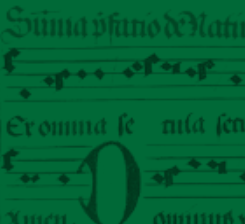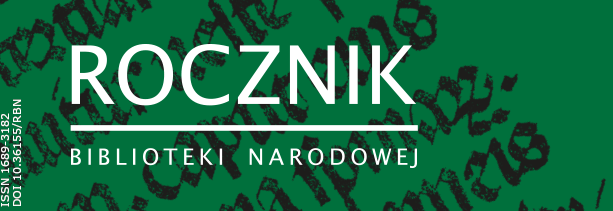NUMERY ARCHIWALNE

STRONA REDAKCYJNA, SPIS TREŚCI, s. 1–8 / CREDITS, TABLE OF CONTENTS, p. 1–8
STUDIA I MATERIAŁY / STUDIES AND MATERIALS
Czytelnictwo młodzieży szkolnej 2017, s. 11–242 / School youth reading habits and attitudes as of 2017, p. 11–242
The article analyzes the results of a nationwide representative quantitative survey conducted in 2017 and regarding the reading habits of teenage students completing their compulsory education. These analyses are compared with those of the surveys carried out in 2003, 2010 and 2013 using the same methodology, which makes it possible to examine continuity and change in the interviewees’ reading patterns and attitudes. Polish adolescents’ reading habits, and expectations related to satisfaction from reading are described. The scope of Polish teenagers’ common extracurricular reading experience is identified and characterized. Their attitudes, motivations, socialization to reading, reading culture transmission in childhood, participation in social circulation of books and reading strategies are analyzed in order to estimate to what extent they are willing to read books, what are the reasons behind their current reading predispositions, and how they differ from each other in their expectations about this activity.
Przyczynek do biografii Łukasza z Wilkanowa, doktora obojga praw i teologii (XV/XVI wiek) i dziejów jego księgozbioru, s. 243–258 / A contribution to the biography of Łukasz of Wilkanów, doctor of both laws and theology (15th/16th century), and to the history of his book collection, p. 243–258
The life and work of Łukasz of Wilkanów at the turn of the 15th and 16th centuries remain largely unknown. It is also impossible to retrieve information about his entire book collection, but its fragments can be identified owing to a the prewar register of incunabula of the Theological Seminary in Płock. The aim of this article is to present data on the volumes belonging to Łukasz of Wilkanów and stored before World War II in Płock, which, albeit scarce, constitute a noteworthy collection of law-related works and, in the future, may help identify lost books from the Chapter library.
Księgozbiór parafii w Kuleszach-Rokitnicy na Podlasiu oraz osoby go kształtujące w okresie staropolskim w świetle zachowanych inwentarzy, s. 259–286 / Book collection of the Kulesze-Rokitnica Parish in Podlasie during the 16th–18th century, p. 259–286
The library of the Kulesze-Rokitnica Parish, part of the Lutsk Diocese in Podlasie, was one of the few large ones. A survey of the works collected in Kulesze demonstrates that they concern not only the issues related to basic pastoral duties, but also to other domains, which bears witness to the open-mindedness of those who brought these books here and used them. Of all the books collected by successive Kulesze parish priests, at least a dozen or so were rarities in typical parish collections and were valuable and of high quality. Therefore the fire of the presbytery in 1802 that destroyed this extraordinary collection brought considerable damage to the cultural heritage of western Podlasie.
Reforma składni języka haseł przedmiotowych RAMEAU, s. 287–304 / Reform of the syntax of the RAMEAU subject heading language, p. 287–304
Since 2017 the subject heading language of the Répertoire d'autorité matière encyclopédique et alphabétique unifié (RAMEAU), an information and search language used in subject cataloguing in most libraries in France, has been undergoing a reform. From a pre-coordinated language, after the elimination of syntax, it is supposed to become a modern post-coordinated language that can also be used outside library catalogues. A characteristic feature of the RAMEAU language syntax is its complexity together with numerous exceptions and detailed rules. Thus, in the first place, the reform aims at simplifying the syntax to a structure with a schematic order of the elements [subject]-[subject subheading]-[geographical subheading]-[chronological subheading]. The form subheading, detached from the extended subject heading in the first place, was replaced by a formal theme. Ultimately, upon decomposition, each of the elements of the extended subject heading will be used independently in the postcoordinated system and will be included in the French National Entities File.
Metodyka opracowania rzeczowego publikacji z zakresu fizyki i astronomii przy użyciu Deskryptorów Biblioteki Narodowej, s. 305–354 / Methodology of subject cataloguing of publications in the field of physics and astronomy with the use of Polish National Library Descriptors, p. 305–354
The article is a practical introduction to the subject of cataloguing of publications in the field of physics and astronomy. It presents certain challenges that are faced by librarians who catalogues such publications. It discusses the solutions that have been worked out in the practice of subject cataloguing in the National Library of Poland, and the possibilities offered in this respect by the National Library of Poland Descriptors. Particular attention is paid to the types of publications most often encountered in cataloguers’ practice. An important part of the article is devoted to the characterization of the vocabulary typical of publications in the field of physics and astronomy, in particular scientific ones, to applying the general principles of creating subject descriptors to specific situations, and to using them in thematic cataloguing.
Polonika w kolekcji rolek pianolowych Biblioteki Narodowej, s. 355–379 / Polonics in the piano rolls collection of the National Library of Poland, p. 355–379
Piano rolls as records of music were present in the phonographic industry for a relatively short time: from the beginning of the 20th century until the world economic crisis in the 1930s, which had an impact on the discontinuation of their production. The National Library of Poland’s collection of piano rolls has more than tripled since the publication of the first article devoted to it in Rocznik Biblioteki Narodowej, 2004, and is now the largest collection of such recordings in the country. It reflects well the diversity of the repertoire published on rolls: the widespread salon music, popular music together with American jazz performances, recordings released in the United States for ethnic minorities who arrived to America in the 19th and 20th centuries, including the Polish community in the US, and above all the classical music repertoire with works by composers from the Renaissance to the beginning of the 20th century. Which is not surprising is the high number of recordings of Fryderyk Chopin's works in the collection, due to great popularity of this composer. Another Polish composer who enjoyed great popularity at the turn of the 19th and 20th centuries was Maurycy Moszkowski. The piano rolls in the collection of the National Library of Poland also contain works by other Polish composers that were rarely published in the form of recordings at the beginning of the 20th century, such as Stanisław Moniuszko, Zygmunt Noskowski, Józef Damse, Natalia Janotha. The most valuable part of the collection are the recordings of famous piano masters, such as Eugène d'Albert, Alfred Grünfeld and Sergei Rachmaninoff. The recorded performances of Polish pianists Teodor Leszetycki, Józef Wieniawski, Ignacy Jan Paderewski, Józef Śliwiński and Józef Hofmann confirm that Poles were among the world's leading piano virtuosi of the time. The Polish aspect of the collection is also visible in the authorship of the musical transcriptions of the recorded works, for example the virtuoso arrangements by the outstanding Polish pianist Karol Tausig. Among the publishers are Polish companies: Gebethner i Wolff as well, as Herman i Grossman. The collection is a valuable resource for musicological research, among others on Polish piano art at the turn of the 19th and 20th centuries.
Poezja polska w Serbii po 1990 roku. Rekonesans, s. 381–398 / Polish poetry in Serbia after 1990: an overview, p. 381–398
The present article is an attempt at an overview of the most important phenomena related to the translations of Polish poetry in Serbia after 1990. The text introduces the most valued authors, the most important individual editions and anthologies, tracks the presence of Polish poets in Serbian literary life, for example their participation in literary festivals, as well as prizes awarded in Serbia to Polish authors. The article also discusses the role of the translator in the publishing process.
RECENZJE I SPRAWOZDANIA / REVIEWS AND REPORTS
Odpowiedź na recenzję („Rocznik Biblioteki Narodowej” 2019, t. 50), s. 401–413 / Response to the review („The National Library Yearbook” 2019, vol. 50), p. 401–413
Komentarz do Odpowiedzi na recenzję Jakuba Macieja Łubockiego, s. 414–417 / Commentary to Jakub Maciej Łubocki’s response to the review, p. 414–417

